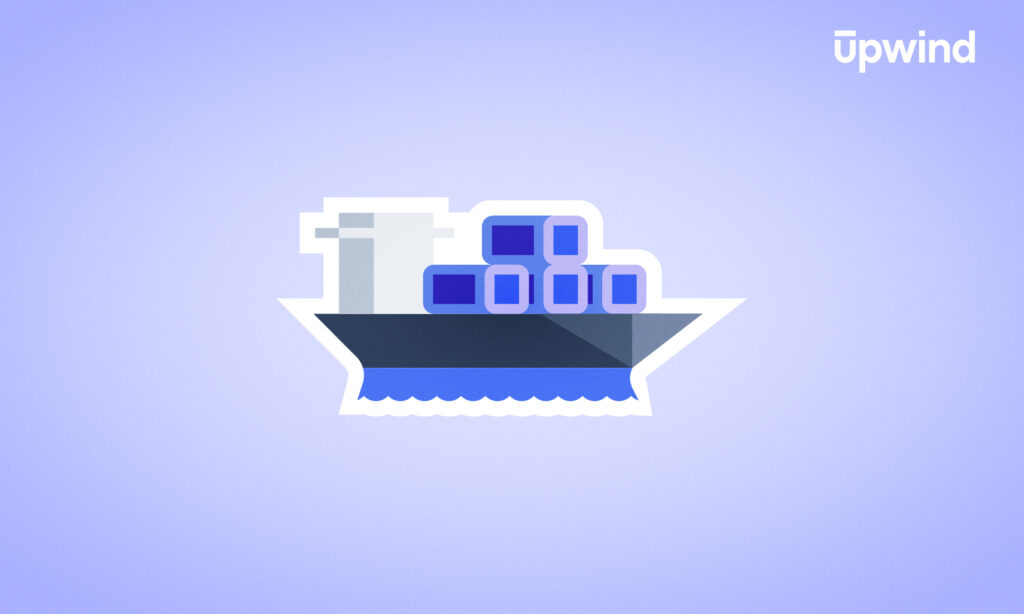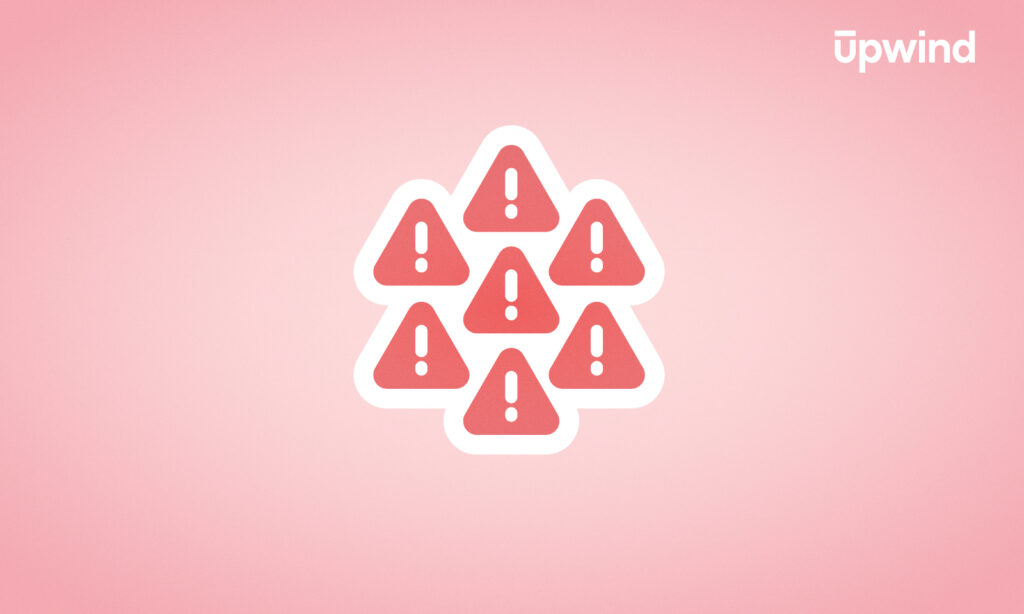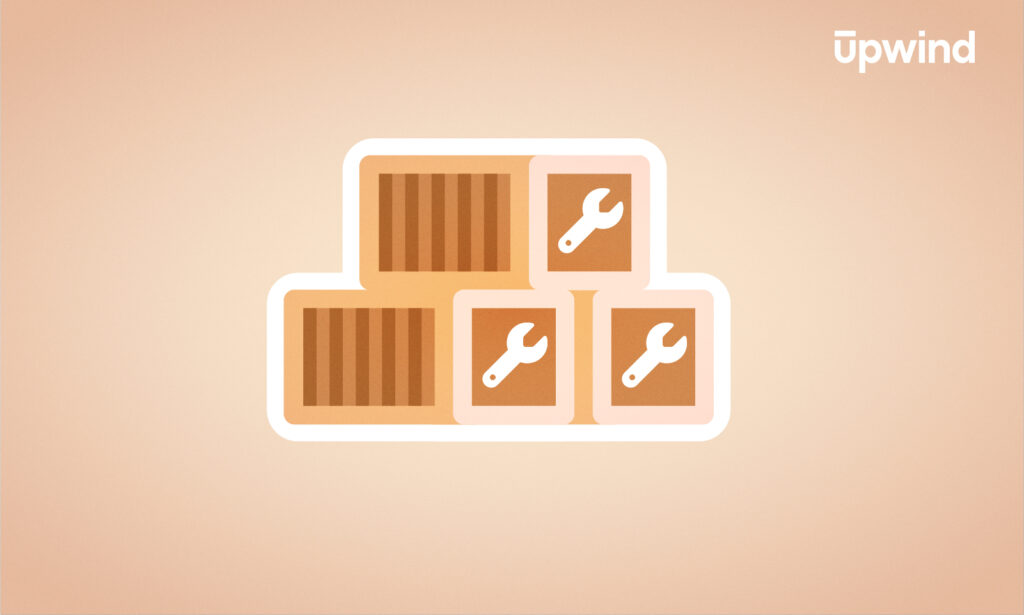
While container security tools can identify vulnerabilities and enforce compliance, they can also result in alert fatigue, difficult integrations, and security gaps across disparate environments. The debate isn’t whether to use these tools — it’s how to use them smarter in increasingly intricate setups. We’re breaking down what tools are available and their best use cases, along with limitations.
What are Container Security Tools?
Container security tools are designed to safeguard the building blocks of modern applications — containers. These lightweight, portable software units bundle code and dependencies into a single package, enabling efficient, consistent, and easily deployable software across environments.
Their consistency is what makes containers indispensable in modern development. Though there are deep challenges to overall container security, including specific container orchestration platforms like Kubernetes, we’ll focus on four basic characteristics of containers:
Containers Are Ephemeral
They spin up and shut down rapidly, making tracking vulnerabilities, monitoring runtime, and enforcing security policies difficult. Solutions include:
- Continuous monitoring for real-time visibility into short-lived workloads
- Automated vulnerability scanning integrated into the CI/CD pipeline
- Runtime behavioral analysis to detect anomalies in a dynamic environment
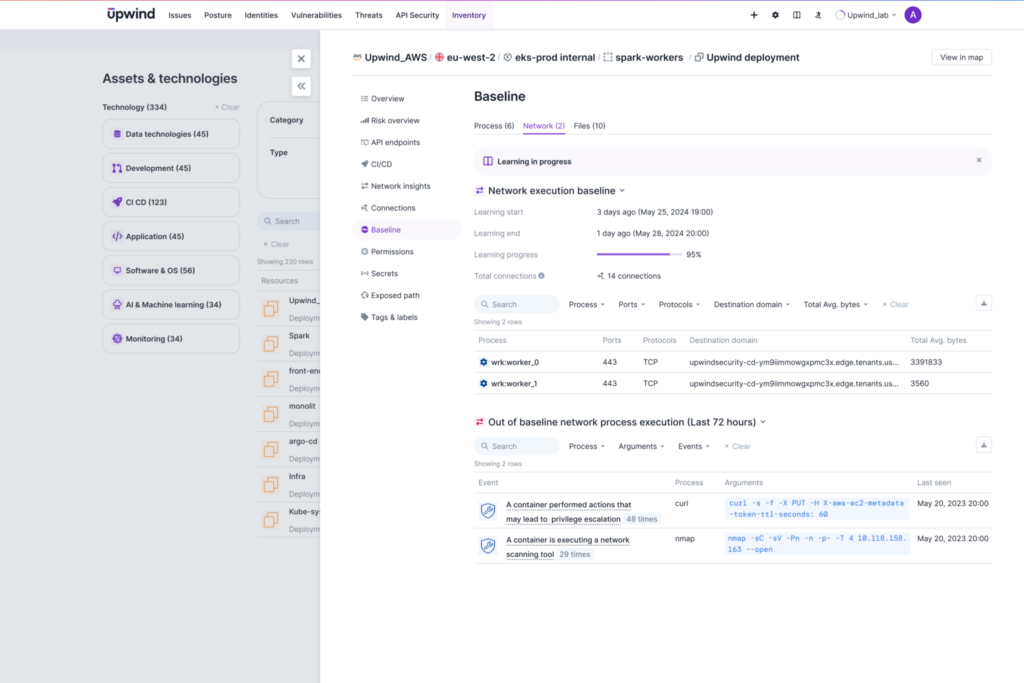
Containers Share Resources
Often, containers share the same OS and kernel, meaning a breach in one container could impact others on the same host.
Key security tactics include:
- Hardening the container runtime and host OS
- Implementing kernel-level security
- Enforcing least privilege for containerized processes
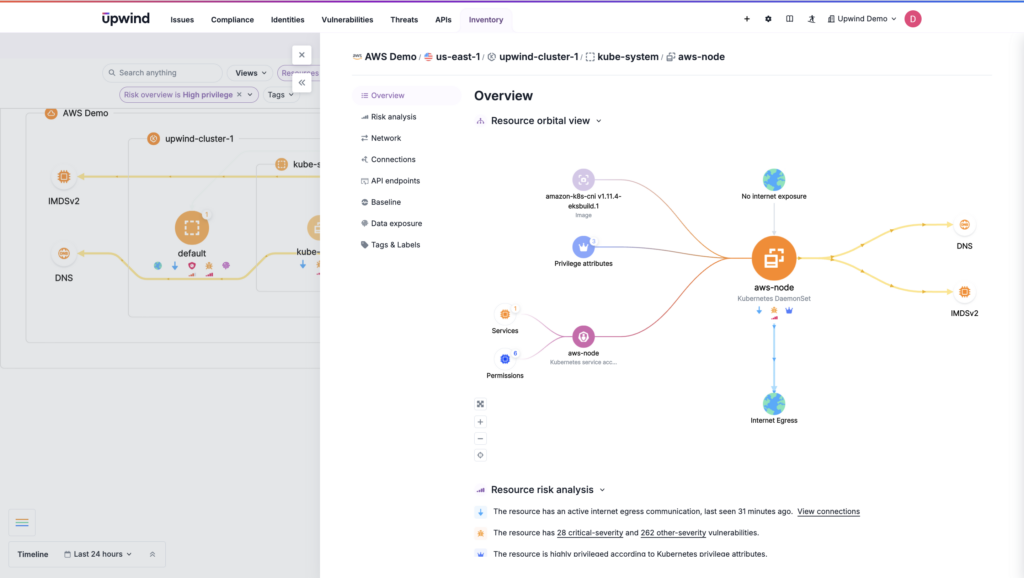
Containers Have Layered Dependencies
Built from images that may include software libraries and frameworks, container vulnerabilities in one layer can affect every container built from that image. Threats due to layered dependencies need to be countered with:
- Regular vulnerability scanning of base images and dependencies
- Image hardening to reduce unnecessary components
- Verifying image integrity
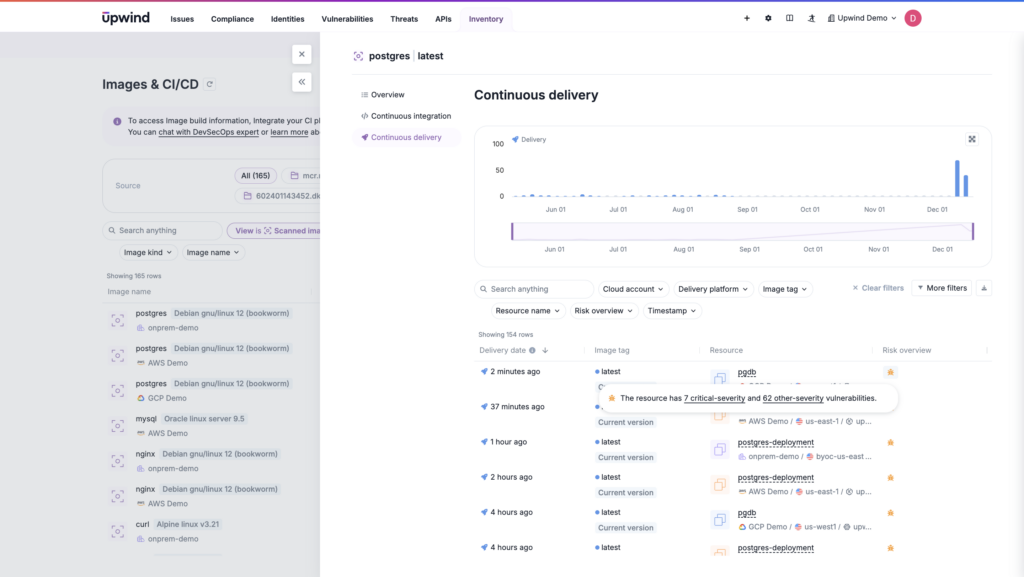
Containers are Complex to Orchestrate
Tools like Kubernetes or Docker Swarm help, but they introduce new security considerations like managing API access, secrets, and network segmentation. Top security tactics include:
- Securing orchestration tool configurations like RBAC and API access controls
- Encrypting and managing secrets
- Setting network policies to segment container traffic and reduce lateral movement
Open-source and cloud-specific tools exist to contribute to safeguarding containers in the context of each of these characteristics.
However, their effectiveness is limited. For instance, a vulnerability scanner integrated into a CI/CD pipeline may catch issues early but could bog down developers if overly rigid. And runtime monitoring might detect suspicious activity, but without actionable insights, it’s just noise.
Ideally, container security tools provide clarity and control without slowing teams down. Let’s take a look at some top tools and their capabilities (along with their limits) as the first step toward building a more comprehensive approach to container security.
Advanced Container Security with Upwind
Upwind combines runtime-powered threat detection with comprehensive scanning, providing actionable insights that help teams address issues in real time and uncover root causes 10X faster than traditional methods.
Top Container Security Tools
Containers are lightweight, portable, and scalable, making them almost universally used by organizations seeking efficient deployments.
According to the Cloud Native Computing Foundation, 96% of organizations already use, or are currently evaluating, Kubernetes.
However, the benefits of containerization lend themselves to new security challenges. To solve them, many organizations opt for either open-source tools, which can provide flexibility and community-driven development, or cloud-specific tools that offer deep integration with their ecosystems.
Here’s a look at some of the top tools in each category:
Open Source Tools
Trivy
Trivy is an easy-to-use vulnerability scanner. It scans container images, filesystems, and code repositories for vulnerabilities and misconfigurations. What does it offer? Comprehensive vulnerability and misconfiguration scanning with integration into CI/CD pipelines.
However, Trivy has limited pre-runtime analysis and no advanced runtime monitoring or threat detection.
Falco
Falco focuses on runtime security by monitoring and detecting unexpected behavior in containerized environments. Organizations get real-time anomaly detection for containers and Kubernetes, along with community support for custom rules.
But they could produce high volumes of alerts without fine-tuning, and they won’t be able to address pre-deployment security.
Kube-bench
Kube-bench specializes in auditing Kubernetes clusters against CIS benchmarks. It’s a lightweight, focused tool for identifying configuration risks in Kubernetes environments.
Kube-bench is limited to compliance auditing, with no runtime or vulnerability scanning. And it requires manual updates to keep pace with evolving Kubernetes and CIS standards.
Cloud-Specific Tools
AWS Inspector
AWS Inspector, developed by Amazon, automates the scanning of container images stored in Elastic Container Registry (ECR). It integrates with AWS services, offering native vulnerability management.
AWS Inspector automates scanning for vulnerabilities in AWS-hosted containers, and integrates with ECS and EKS.
But it’s an AWS-only tool, and organizations will need to supplement their security stacks with runtime support for hybrid cloud environments.
Google Cloud Security Command Center (SCC)
Google SCC centralizes security for workloads on Google Kubernetes Engine (GKE) and other GCP resources. It can identify vulnerabilities and detect misconfigurations.
The tool offers a centralized dashboard for vulnerabilities, misconfigurations, and threat detection in GKE, and can help with proactive insights when integrated with other Google Cloud services, such as Cloud Asset inventory and Cloud Logging.
However, it’s exclusive to the Google Cloud ecosystem, with limited customization for security policies, making it less adaptable for unique use cases.
Azure Defender
Microsoft’s Azure Defender protects Azure Kubernetes Service (AKS) containers. It integrates with other Azure security tools to deliver streamlined insights for containerized workloads.
It comes with built-in compliance checks, threat detection, and policy enforcement for Azure containers and can integrate with Azure-native tools like Sentinel for unified threat management.
However, Azure Defender is designed for Azure users, so it’s not ideal for hybrid or multi-cloud setups. It can also add costs for high volumes of containerized workloads, especially in large-scale environments.
Use Cases: Matching Tool to Needs
Given tools focus on solving different problems, we extrapolated the 2 top core use cases for each, identifying where you’ll find these problems in the development lifecycle. For those with multiple challenges at a particular stage or in a particular cloud, the choice between these tools might be clear. Tools with top use cases across stages might be the right choice for others with diverse needs.
| Tool | Use Case | Stage | Use Case | Stage |
| Trivy | Scanning container images for vulnerabilities | Development | Identifying misconfigurations in CI/CD pipelines | Development |
| Falco | Detecting runtime anomalies in Kubernetes clusters | Runtime | Monitoring file system changes in production | Runtime |
| Kube-bench | Auditing Kubernetes clusters for CIS compliance | Compliance (Pre-Deployment) | Identifying configuration risks in orchestration | Compliance (Pre-Deployment) |
| AWS Inspector | Scanning container images in Elastic Container Registry (ECR) | Development | Ensuring compliance for AWS-hosted workloads | Compliance |
| Google Cloud SCC | Detecting misconfigurations in GKE clusters | Compliance | Monitoring vulnerabilities in GCP containerized workloads | Runtime |
| Azure Defender | Policy enforcement for Azure Kubernetes Service (AKS) | Compliance (Pre-Deployment) | Detecting threats in Azure-native container environments | Runtime |
Container security tools vary. Open-source tools, like Trivy, Falco, and Kube-bench, tend to have limited scope: Trivy focuses on pre-runtime scanning, Falco looks at runtime monitoring, and Kube-bench centers on compliance.
However, these tools often address specific lifecycle stages and require integration with other tools for broader coverage.
On the other hand, cloud-native tools, like AWS Inspector, Google SCC, and Azure Defender, may add multiple security features across the development lifecycle, but with limited reach within their own ecosystems. For organizations heavily entrenched in these clouds, these tools could offer simple deployment.
Comprehensive runtime-powered CNAPPs go beyond the open-source focus on specific features and the cloud platforms’ focus on their own environments. They can offer lifecycle-wide security by combining pre-runtime scanning, runtime monitoring, and policy enforcement. And they’re particularly appropriate for organizations managing complex containerized workloads across hybrid or multi-cloud environments.
In a world where open-source tools offer laser-focused services, comprehensive CNAPPs represent the broad, overarching light that can cover more of your ecosystem, eliminating visibility gaps.
Upwind is an Advanced Strategy for Container Security
While open-source tools and cloud-native solutions offer valuable capabilities for specific use cases, their siloed nature can create blind spots in complex setups. And cloud-specific tools focus on securing resources in their respective ecosystems, requiring complementary tools for full coverage in hybrid or multi-cloud environments.
A comprehensive CNAPP like Upwind bridges these gaps with unified lifecycle security, proactive runtime threat detection, and seamless integration across cloud ecosystems, helping teams stay ahead of evolving threats.
Ready to simplify your container security strategy? Schedule a demo today to see how its full-lifecycle capabilities can protect your containers better.
FAQ
What is the difference between container security and Kubernetes security?
Container security involves securing containers themselves. It addresses issues like scanning for vulnerabilities in container images, managing dependencies, enforcing runtime policies, and securing sensitive data within the container.
Kubernetes security goes beyond individual containers to safeguard the orchestration layer. Kubernetes introduces complexities like API access, role-based access control (RBAC), and network segmentation. Securing Kubernetes involves managing these configurations, ensuring proper namespace isolation, protecting the Kubernetes control plane, and monitoring cluster activity to prevent unauthorized access or lateral movement.
How do I decide between using open-source tools and a CNAPP?
Open-source tools like Trivy, Falco, and Kube-bench excel at solving specific problems, such as pre-runtime scanning, runtime anomaly detection, or compliance auditing. They’re perfect for teams addressing these areas and securing discrete parts of their development lifecycles.
A CNAPP offers an all-in-one solution for lifecycle-wide container security. CNAPPs are best for organizations managing complex, multi-cloud environments or those needing centralized visibility and automation across the container lifecycle. They reduce operational overhead by unifying scanning, runtime monitoring, compliance, and orchestration security into a single platform, making them a strategic investment for enterprises prioritizing scalability and proactive protection.
What is a container firewall?
A container firewall controls and monitors network traffic to and from containers. Unlike traditional firewalls, which operate at the network or host level, a container firewall operates at a more granular level within containerized environments, often integrated with orchestration tools like Kubernetes.
A container firewall is when firewall principles are adapted to containers, and functionally includes features like:
- Network segmentation
- Policy enforcement
- Real-time threat detection
Upwind includes container firewall capabilities — it aims to stop traffic and communication between containers, using all three of these features.
What is container security scanning? How is it different from threat detection and vulnerability scanning?
Container security scanning involves analyzing container images and configurations to identify vulnerabilities, misconfigurations, or compliance issues before deployment. It ensures that only secure, compliant containers enter production.
Vulnerability scanning focuses specifically on identifying known vulnerabilities in container images, such as outdated libraries or dependencies. It’s a subset of container security scanning.
Threat detection occurs at runtime, monitoring live containers for active threats or anomalies. Unlike scanning, threat detection addresses real-time risks.
Together, these practices cover container security’s pre-runtime (scanning) and runtime (threat detection) phases.


